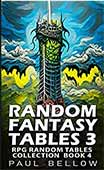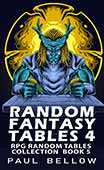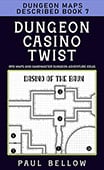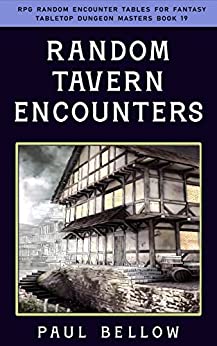Rogues have always held a special place in the hearts of Dungeons & Dragons fans. Their reputation as agile, resourceful, and cunning individuals keeps them at the center of countless legendary tales, from sneaking past deadly traps to orchestrating daring heists. Their unique skill set ensures that a rogue is never redundant, finding ways to shine both in and out of combat. In every edition, players return to the rogue time and again, drawn by the endless possibilities for creative problem-solving and nuanced storytelling.
The new 2024 Player’s Handbook brings fresh breadth to the rogue’s arsenal. Refined class mechanics, streamlined features, and modernized subclass options give new life to the class. Notably, many features have been rebalanced or expanded, skill lists have shifted, and customization has increased through new feats and revised backgrounds. Rogues now benefit more than ever from a playstyle that rewards quick thinking and adaptability, ensuring their continued popularity at the table.
This article presents five standout rogue builds that harness the potential of the latest rules. Each build leverages current mechanics and subclass features, offering a compelling character concept and formidable power in and out of combat. Whether you’re looking for a whispered agent of death, a dashing duelist, a magical infiltrator, a spectral dealer, or a psychic blade, these rogue builds are ready for the new era of D&D and the next adventure on your table… even if you use RPG AI Tools for fantasy worldbuilding!
- Mastering the Art of the Rogue
- Final Thoughts on Rogue Builds in the 2024 D&D Rules
Mastering the Art of the Rogue
At the core of every rogue’s success lies a keen understanding of their principal abilities. The foundation is Sneak Attack, the class’s famous damage spike that rewards careful positioning and tactical acumen. Using finesse or ranged weapons, a rogue can unleash a devastating burst of extra damage on unsuspecting foes, or whenever an ally distracts their opponent. The precise timing, setup, and delivery of Sneak Attack remain central to high-level rogue play.
Cunning Action transforms the rogue’s tactical capacity every round. This bonus action permits seamless disengaging, dashing, or hiding, allowing rogues to dart across the battlefield effortlessly. The 2024 Player’s Handbook clarifies these actions for smoother play and highlights the rogue’s priority on both movement and avoidance. Whether jumping into or out of the spotlight, Cunning Action ensures a rogue is always a step ahead, rarely caught or outmaneuvered.
Recent updates have refined how subclass features interact with the rogue’s base mechanics. Some subclasses grant expanded uses of skills or entirely new ways to leverage Cunning Action. Revised feats can further amplify key aspects of the class, from mobility and perception to lethal attack potential and social versatility. Spending time understanding these new options will unlock truly potent and unique builds, transforming a rogue from competent to legendary.
Try my AI Tabletop RPG generators...and an extensive library of content!
Mastery of the rogue is about synergy. The interplay of class features, skill proficiencies, chosen feats, and equipment opens the path to a playstyle that feels both deeply personalized and exceptionally effective. Familiarity with these options, paired with creativity and a willingness to adapt, will bring these featured builds—and your rogue character as a whole—to brilliant life at any table.
The Phantom Blade: Ghostly Precision
The Phantom subclass weaves ghostly power and chilling mystique into the rogue’s repertoire. By connecting with the spirits of the dead, a Phantom Rogue treads the line between worlds, haunted and haunting in equal measure. This affinity manifests through unique abilities that are as useful for unraveling mysteries as they are for unsettling enemies in the throes of battle.
Whispers of the Dead, an early subclass feature, lets the Phantom channel lost knowledge as needed. At the start of every rest, the rogue can exchange a skill or tool proficiency, building a skillset guided by wandering souls. This turns the Phantom into a versatile problem-solver, capable of adapting on the fly to the curveballs of any campaign. In roleplay, this eerie connection can become a source of insight, secrets, and even subtle intimidation.
Combat becomes a spectral spectacle when the Phantom unleashes Wails from the Grave. Whenever they deal Sneak Attack damage, a shadowy echo spills forth, delivering necrotic pain to a second enemy nearby. As battles erupt, this capacity to damage multiple targets simultaneously can devastate enemy lines or whittle down dangerous threats. The addition of Ghost Walk—an ethereal, incorporeal stride—lets the Phantom drift through obstacles and slip from mortal grasp, dramatically enhancing mobility and infiltration potential.
⚔️ Fantasy RPG Random Tables Books
Make life as a Gamemaster easier…
If you play Dungeons & Dragons, Pathfinder, or other fantasy RPGs, this
RPG random tables series
is packed with encounters, NPCs, treasure, and more. Available in eBook or print—either way, you’ll have a wealth of adventure ideas at your fingertips.
Whether investigating the past or shaping the present, the Phantom excels at extracting information and leaving a lasting impression. The subclass rewards those who blend cunning tactics with an appreciation for the supernatural, turning every encounter—combat or otherwise—into an opportunity for chilling flair and devastating impact.
Phantom Rogue Key Features and Strategies:
- Use Whispers of the Dead to shift skill/tool proficiencies every long rest for flexible problem-solving.
- Capitalize on Wails from the Grave to strike a second enemy within 30 feet after a successful Sneak Attack.
- Activate Ghost Walk for short bursts of incorporeality to slip past barriers and evade danger.
- Choose feats like Observant or Skilled to reinforce the subclass’s adaptability.
- Prioritize Dexterity, but invest in Wisdom or Intelligence for effective perception or investigation.
- Use expertise with Perception and Stealth to maximize scouting.
- Lean into backgrounds like Haunted One or Investigator for flavorful campaign hooks.
- Choose a signature ranged weapon for better positioning and to optimize Wails from the Grave.
- Incorporate roleplay that communicates with or draws on knowledge from lingering spirits.
- Take short rests strategically for timely Ghost Walk replenishment.
- Pair with spellcasters for additional necrotic or anti-undead synergy in the party.
The Phantom Rogue’s greatest asset lies in its blend of strategic flexibility and supernatural prowess. With each rest, the character refines their skillset, while each burst of combat becomes a display of chilling, multi-target damage. It’s a build that never grows stale—always adapting, always threatening, and always memorable.
Players who gravitate toward enigmatic, versatile characters will find immense satisfaction with the Phantom. Equally at home solving mysteries, exploring haunted ruins, and dispatching foes with ghostly precision, this subclass embodies both flavor and effectiveness for anyone wanting a rogue who is both unpredictable and unforgettable.

The Swashbuckler: Charismatic Duelist
Swashbucklers redefine what it means to play a rogue by charging from the shadows to the center of the spotlight. Agile, bold, and endlessly charming, the Swashbuckler’s approach to danger is to laugh in its face—and then slice it with a flourish. D&D’s updated rules celebrate the archetype with clear mechanics for dueling bravado, crowd control, and social command.
At the heart of the Swashbuckler is Fancy Footwork. This allows the rogue to strike in melee without concern for immediate retaliation. After making a melee weapon attack, the rogue can retreat from the target with impunity, facilitating hit-and-run tactics that frustrate foes and maintain control over combat space. Paired with Rakish Audacity, Swashbucklers can reliably deal Sneak Attack damage even while dueling one-on-one, removing the common rogue need for allies within striking distance.
Charisma becomes a crucial attribute for Swashbucklers, enhancing everything from social interactions to initiative rolls. This focus blurs the line between combatant and party face, giving the rogue plenty of opportunities to lead negotiations, charm nobles, or conceal their motives behind a dazzling smile. The subclass works best for those who value roleplay as much as tactical maneuvering.
The Swashbuckler’s toolkit emphasizes both substance and style. Their movement, resilience, and reliable damage output ensure they are never outclassed in combat, while their social features make them irresistible agents of intrigue in and out of the dungeon. This is the build for players who want their character to be as memorable in conversation as in battle.
Swashbuckler Rogue Tactics and Considerations:
- Maximize Dexterity and invest in Charisma for best combat/social performance.
- Choose the rapier or scimitar for finesse and stylistic value.
- Take the Mobile feat to glide through the battlefield, increasing movement and avoiding opportunity attacks.
- Consider Dual Wielder if you want to engage in two-weapon fighting.
- Use Fancy Footwork to make safe attacks in melee and disengage without using Cunning Action.
- Exploit Rakish Audacity to trigger Sneak Attack without needing an adjacent ally when dueling.
- Invest in Persuasion and Deception to dominate social scenes.
- Select backgrounds that boost social skills, such as Noble or Entertainer.
- Seek feats like Lucky or Inspiring Leader for added resilience and party support.
- Prioritize initiative boosting through Dexterity and relevant feats.
- Use Acrobatics and creative descriptions for environmental stunts during encounters.
Swashbucklers command attention both at the gaming table and in-game. Their defining blend of showmanship and combat expertise guarantees that every skirmish is a spectacle and every negotiation holds the promise of drama. The subclass is tailor-made for the player who wants high excitement and the latitude to lead—by force or by charm.
If you enjoy being the party’s face, always looking for a chance to be the hero (or antihero) in the story’s most pivotal moments, Swashbuckler is right for you. This build excels in dynamic situations, seamlessly switching between combat brilliance and social dominance, perfect for any campaign craving energy and flair.
The Arcane Trickster: Magical Infiltrator
The Arcane Trickster combines classic rogue panache with the versatility and unpredictability of arcane magic. Spellcasting expands the rogue’s options enormously, allowing for more creative solutions to challenges while maintaining the core sneaky, dexterous flair. This subclass appeals to players who want a rogue with layers of deception, creativity, and magical mischief.
Mage Hand Legerdemain is the heart of the Arcane Trickster’s unique style. This enhanced version of the Mage Hand can be used for subtle thefts, remotely disarming traps, or creating distractions during infiltration. Spells like Invisibility and Dispel Magic extend the Trickster’s reach, providing answers to barriers and threats most mundane rogues can only bypass through brute force or cunning skill checks.
⚔️ Fantasy RPG Random Tables Books
Make life as a Gamemaster easier…
If you play Dungeons & Dragons, Pathfinder, or other fantasy RPGs, this
RPG random tables series
is packed with encounters, NPCs, treasure, and more. Available in eBook or print—either way, you’ll have a wealth of adventure ideas at your fingertips.
Intelligence emerges as a vital stat for the Arcane Trickster, governing not only spell effectiveness but also bolstering investigative and arcane skills. The combination encourages investment in both utility and sneakiness, supporting a playstyle full of clever solutions and “never saw it coming” moments. Spell selection is key, ranging from illusions and enchantments for deception to abjurations that foil enemy plans.
The real art of playing an Arcane Trickster comes from weaving together spells and classic rogue skills in inventive ways. They are masters of unpredictability, turning a locked door, a magical trap, or a guarded chest into opportunities for clever play. The subclass rewards imagination, lateral thinking, and a touch of audacity.
Arcane Trickster Spell and Ability Combos:
- Use Mage Hand Legerdemain for picking pockets, lifting keys from hooks, and triggering traps remotely.
- Cast Invisibility to bypass obstacles, initiate ambushes, or escape pursuit.
- Prepare Dispel Magic for breaking wards, curses, or magical barriers.
- Combine Booming Blade cantrip with Sneak Attack for powerful melee strikes.
- Use Minor Illusion to create visual cover, distractions, or to stage deceptions mid-mission.
- Take the Find Familiar spell (through Magic Initiate) to scout and deliver touch spells.
- Leverage Enchantment spells like Charm Person for social infiltration.
- Use Darkness and other vision-obscuring spells to control the battlefield.
- Boost Intelligence for improved spell save DCs and key skill checks.
- Integrate Cunning Action with spells for layered escapes or multi-step infiltration tactics.
- Select feats like Alert or Keen Mind to strengthen positioning and mental acuity.
Arcane Tricksters thrive on adaptability. No two encounters need unfold the same way when magic and stealth are at your disposal. The subclass encourages bold experimentation, letting the player dictate the tone and tempo of the game’s most challenging scenarios.
Players craving surprise, versatility, and solutions that weave magic with skill will find everything they want here. The Arcane Trickster is at their best when outsmarting puzzles, dazzling foes, and ensuring that the rogue is never a one-trick pony.

The Assassin: Lethal Precision
The Assassin rogue embodies the ideal of precision, patience, and devastating force. Rooted in a playstyle of premeditation and surgical execution, the Assassin is the undisputed master of preparation and the surprise kill. If a campaign calls for political intrigue, infiltration, and dramatic reversals of fortune, this build is perfectly at home.
The keystone feature, Assassinate, rewards striking first and striking hard. Any attack made against a surprised creature becomes an automatic critical hit, magnifying the rogue’s damage in the opening round. This makes initiative rolls and tactical positioning critically important. Infiltration Expertise and the expanded use of disguise kits allow the rogue to blend into any environment, gather intelligence, and close in on targets with chilling efficiency.
Success requires more than brute force. The Assassin’s capabilities shine brightest when used in tandem with strategic reconnaissance, teamwork, and planning. This is a playstyle for patient tacticians—a master of ambushes who can flip the script of an encounter in a single moment of perfect violence. The 2024 rules reinforce the Assassin’s utility with clarity and small tweaks that reinforce the identity of the quintessential undercover killer.
In the right hands, the Assassin moves from scene to scene as both observer and actor, always on the threshold of opportunity. Whether toppling a villainous lord, eliminating a rival agent, or destabilizing a cult from within, the Assassin applies pressure with every calculated, critical strike.
Try my AI Tabletop RPG generators...and an extensive library of content!
Assassin Rogue Optimization Strategies:
- Strike first in combat with the Alert feat, maximizing the use of Assassinate for early critical hits.
- Take Observant or Skulker for better scouting and undetectable movement.
- Keep poison ready and consider the Poisoner feat for added lethality against single targets.
- Choose ranged or finesse weapons that complement your infiltration style.
- Master Deception, Disguise Kit, and Stealth for effective use of Infiltration Expertise.
- Collaborate with allies for spells like Sleep or Hold Person to engineer surprise.
- Create ambushes using Cunning Action and tactical patience.
- Boost Perception for superior awareness of enemy movement and traps.
- Select magical equipment that enhances stealth or critical damage output.
- Prepare escape plans for high-risk kills, relying on party support and terrain.
- Choose backgrounds like Charlatan or Spy for rich narrative hooks.
The Assassin’s playstyle hinges on discipline—waiting for the right moment and then acting with overwhelming force. Every encounter becomes a tension-filled puzzle that asks, “Can you set the perfect trap?” When your preparation pays off, the results are spectacular and campaign-defining.
Players who savor high-stakes gameplay and relish the balance between blending in and standing out will thrive with the Assassin Rogue. If you want to drop jaws with a perfect execution and slip back into the shadows before anyone can react, this build deserves your attention.
The Soulknife: Psychic Striker
The Soulknife brings the unprecedented flavor of psionics to the rogue, merging classic sneakiness with strange and unsettling psychic powers. Through sheer force of will, the Soulknife creates blades of pure psychic energy, attacking in ways that cleave through defenses both physical and mental. The result is a rogue who feels subtly alien, unpredictable, and endlessly flexible.
Soulknives wield their Psychic Blades as natural extensions of themselves. These weapons are conjured at will and can be thrown or used in melee, providing both versatility and a damage type few foes can easily resist. Psionic Power augments everything the Soulknife does, granting dice they can spend to improve ability checks, enhance attacks, or recover from setbacks. This resource adds a new dynamic, challenging players to weigh when to attack and when to reinforce their skills.
Telepathic Communication unlocks unique strategies for coordination and planning, letting the Soulknife pass warnings, share plans, or sow confusion in utter silence. The subclass thrives when leveraged as an infiltrator, a silent scout, or a manipulator behind enemy lines. Resource management takes center stage, urging careful decisions and rewarding those who spend psionic dice at just the right moment.
The Soulknife’s blend of mind-bending offense and subtlety ensures that every encounter offers multiple paths to success. Few classes offer this much thematic and mechanical novelty within the familiar frame of the rogue.
Soulknife Rogue Building Insights:
- Use Psychic Blades for both melee and ranged attacks, adapting to the needs of each skirmish.
- Spend Psionic Energy dice judiciously for ability checks, initiative, and saving throws.
- Rely on telepathy for silent party coordination and infiltration.
- Take the Resilient (Wisdom) or Telepathic feats for mental fortitude and expanded ability.
- Invest heavily in Dexterity, but also keep an eye on Intelligence or Wisdom for perception and skill synergy.
- Plan resource use so that psionic dice are available for critical moments—both attack and escape.
- Invest in Stealth, Deception, and Insight to maximize social and tactical leverage.
- Select backgrounds that imply secret societies, psychic research, or clandestine operations.
- Use thrown Psychic Blades for safe, silent attacks from cover.
- Combine traditional rogue strategies with psionic boosts for enhanced problem-solving.
- Look for magic items that amplify psionic flavor or psychic resistances.
Soulknives offer a captivating change of pace from the typical rogue. Each encounter is shaped by careful resource management, bold strikes, and the eerie silence of telepathic communication. The subclass rewards those who like a blend of the familiar and the unknown, featuring both reliability and surprising twists.
For players who want to explore magic-adjacent powers and enjoy managing resources for clutch plays, the Soulknife is a brilliant pick. Stealth, combat, social intrigue—each becomes richer and stranger, making you the wildcard in any party.

Choosing Your Rogue: Which Build Fits Your Playstyle?
Rogues in Dungeons & Dragons offer unmatched variety and flexibility; no other class adapts so fluidly to the demands of different tables and campaigns. Each subclass shines in distinct narratives and party roles, providing unique mechanical levers and thematic hooks for every type of player. Whether your heart beats faster at the thought of ghostly whispers or clever banter in the king’s court, knowing which rogue fits your personality is the first step to an unforgettable adventure.
Selecting the right rogue build isn’t just about picking strong features—it’s about finding the playstyle that keeps you energized, session after session. The spectrum runs from tactical masterminds to improvisational charmers, from those who love social intrigue to others who thrive in solitary shadows. With the latest Player’s Handbook updates, rogue subclasses provide more specialized tools and flavorful mechanics than ever before.
Rogue Build Comparison by Player Preference
| Rogue Build | Ideal For Players Who… | Primary Strengths | Social & Roleplay Power | Combat Focus | Magic or Psionics | Skill Versatility | Signature Features |
|---|---|---|---|---|---|---|---|
| Phantom | Enjoy supernatural themes & flexibility | Multi-target damage, knowledge recall | Strong—haunted RP flavor | High—AoE damage | None | Excellent | Whispers of the Dead, Wails from the Grave, Ghost Walk |
| Swashbuckler | Love to lead, duel, & charm crowds | Mobility, solo Sneak Attack | Exceptional—party face | Good—1v1 skirmishes | None | High | Fancy Footwork, Rakish Audacity, Panache |
| Arcane Trickster | Prefer trickery, clever magic, & utility | Magical infiltration, creative control | Good—deceptive RP | Moderate—supportive | Full spell access | Very high | Mage Hand Legerdemain, versatile spellcasting |
| Assassin | Thrive on planning, high-risk play | Burst damage, critical strikes | Moderate—disguises | Very high—frontloaded | None | Good | Assassinate, Infiltration Expertise, Imposter |
| Soulknife | Want psychic flavor & mental tools | Psychic damage, telepathy | Good—silent comms | High—psionic utility | Psionic powers | High | Psychic Blades, Psionic Power, Telepathy |
Key Playstyle Considerations by Build
| Playstyle Focus | Phantom | Swashbuckler | Arcane Trickster | Assassin | Soulknife |
|---|---|---|---|---|---|
| Direct Damage | Strong (AoE) | Good (Dueling) | Decent | Excellent | Strong |
| Exploration/Utility | Very High | Moderate | Exceptional | Moderate | High |
| Stealth & Subterfuge | Excellent | Good | Excellent | Excellent | Very Good |
| Social Interaction | Good | Outstanding | Good | Fair | Good |
| Magic/Psionics | None | None | Full spell list | None | Psionic toolkit |
| Resource Management Complexity | Moderate | Low | High | Moderate | High |
| Solo Effectiveness | High | Very High | High | Moderate | High |
| Team Synergy | Very High | High | Excellent | Moderate | High |
| Best for New Players? | Yes | Yes | Intermediate | Advanced | Intermediate |
Rogue Build Quick Reference by Campaign Tone
| Campaign Tone | Phantom | Swashbuckler | Arcane Trickster | Assassin | Soulknife |
|---|---|---|---|---|---|
| Gothic/Horror | Perfect | Average | Good | Excellent | Good |
| Swashbuckling/Pirate | Average | Outstanding | Very Good | Fair | Good |
| Heist/Intrigue | Very Good | Good | Outstanding | Good | Very Good |
| High Magic | Good | Average | Exceptional | Average | Very Good |
| Political/Roleplay Heavy | Excellent | Exceptional | Good | Good | Good |
| Gritty/Espionage | Good | Average | Very Good | Excellent | Outstanding |
Finding Your Fit as a Rogue
Your enjoyment at the table should always shape your character choices. If you get a thrill from mysterious backstories and adaptive skillsets, the Phantom may haunt your heart. If you love the limelight and improvisational banter, nothing will suit you better than the rakish Swashbuckler. Those who demand a clever blend of magic and mischief will find satisfaction in the Arcane Trickster, while calculated, high-stakes risk-takers will feel right at home with the Assassin. For players enchanted by the unusual—those who crave psychic energy and subtle communication—the Soulknife offers a truly singular perspective.
No matter your style or narrative preference, each rogue subclass holds the promise of unforgettable moments. A well-chosen build will elevate every encounter, deepen your engagement with the story, and spark new ideas for collaborative play. Take a moment to reflect on what excites you most, and let your rogue’s next adventure begin tailored perfectly to your imagination.
Final Thoughts on Rogue Builds in the 2024 D&D Rules
The revised core rules for Dungeons & Dragons continue to cement the rogue as one of the most versatile and flavorful classes in the game. Each of these builds—Phantom, Swashbuckler, Arcane Trickster, Assassin, and Soulknife—demonstrates just how much variety and depth the modern rogue brings to an adventuring party. Whether your campaign focuses on dungeon delving, urban intrigue, or social maneuvering, there is a rogue archetype ready to make every session thrilling and unpredictable.
The strength of the rogue class is its adaptability. No matter which mechanics you favor, the core features remain powerful, and the subclass options offer both narrative hooks and mechanical might. Players can tailor their builds to fit the campaign’s needs or their own evolving preferences, turning each rogue into a reflection of their unique approach to the game.
Understanding both the new mechanics and the defining themes behind each subclass is crucial to getting the most out of your rogue. A Phantom’s haunted air, a Swashbuckler’s unbreakable confidence, an Arcane Trickster’s unpredictability, an Assassin’s lethal patience, and a Soulknife’s psychic mystique all provide avenues to memorable roleplay and strategic mastery. Investing in these aspects ensures every choice deepens your experience.
⚔️ Fantasy RPG Random Tables Books
Make life as a Gamemaster easier…
If you play Dungeons & Dragons, Pathfinder, or other fantasy RPGs, this
RPG random tables series
is packed with encounters, NPCs, treasure, and more. Available in eBook or print—either way, you’ll have a wealth of adventure ideas at your fingertips.
Party composition and campaign style should always shape your final build. Do you want to scout ahead, disarm ancient traps, lead negotiations, or drive the plot with unexpected assaults? The rogue subclasses have you covered, allowing for growth, reinvention, and a constant sense of surprise. Lean into your strengths and be ready to flex when the adventure demands new tricks.
With the arrival of the new core books, the rogue remains at the vanguard of creative play in Dungeons & Dragons. Whether you seek supernatural prowess, social dominance, magical intrigue, perfect assassinations, or psychic strangeness, there has never been a better time to play a rogue. Embrace the challenge, relish the flair, and watch as your exploits become the tales that shape your campaign’s world.










